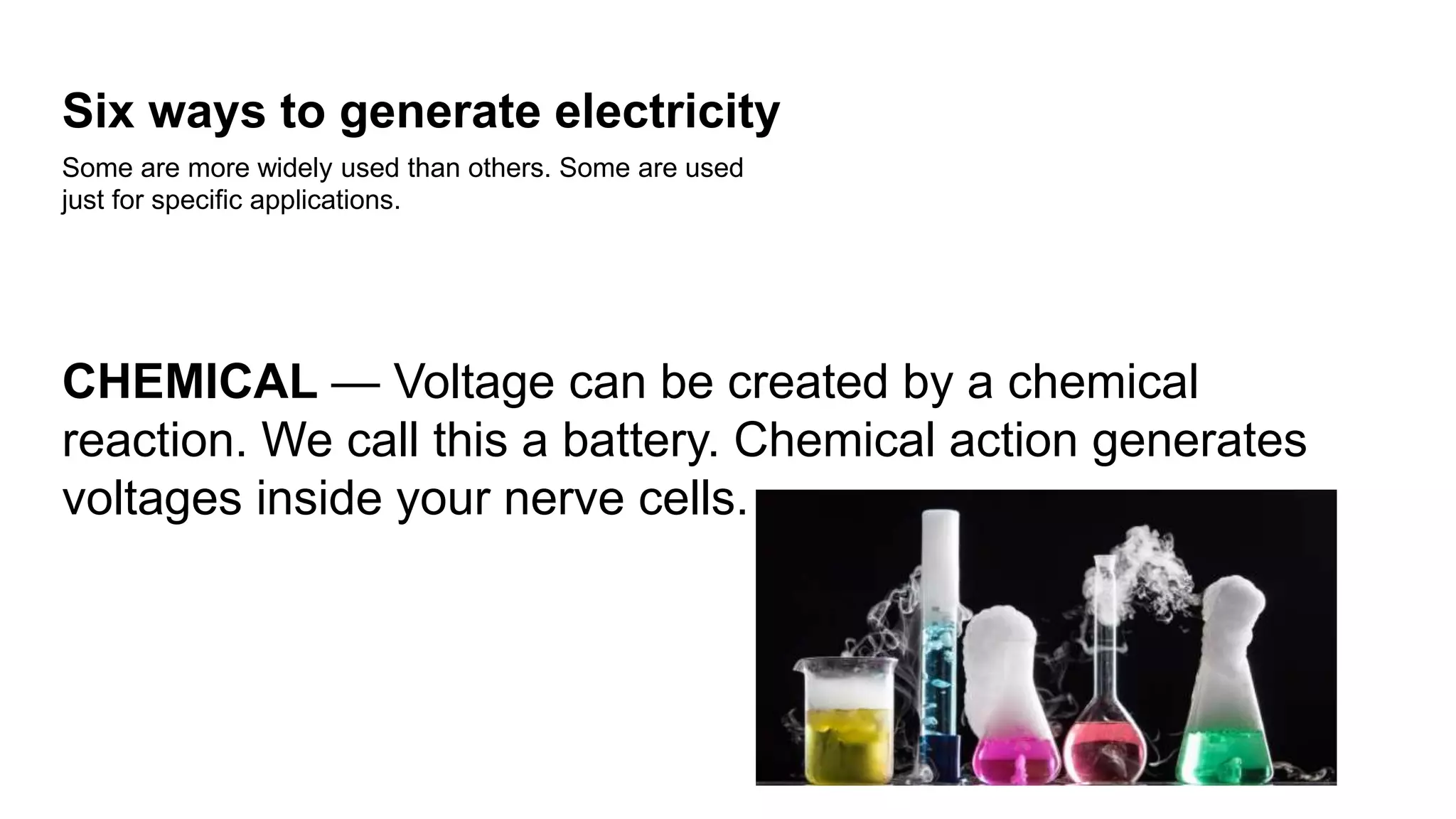Electricity is the flow of electrons from one place to another. It flows more easily through conductors than insulators. The resistance of a material determines how easily electrons flow through it and is measured in Ohms. Electricity can be direct current (DC), where the electron flow is continuous in one direction, or alternating current (AC), where the electron flow alternates direction rapidly. Voltage is the "push" that causes electron flow. Current is the intensity of electron flow, measured in Amps. Power is a measurement of the work performed and is calculated by multiplying voltage by current in Watts.







































